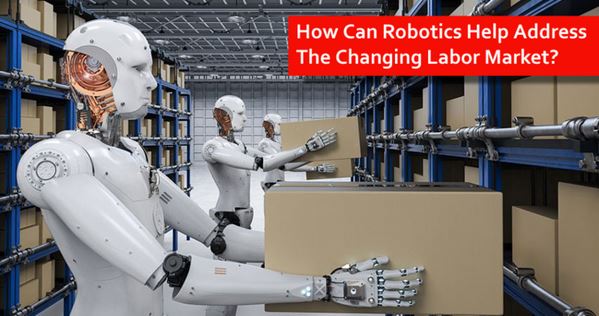The Labor Market Is Changing. How Can Robotics Help?

The Labor Market Is Changing. How Can Robotics Help?
The labor market is changing, but even more dramatically in the logistics industry. Qualified labor is getting harder to find, while a significant percentage of the existing workforce — baby boomers — will be leaving the workforce over the next 10 to 15 years. For the first time, there is an inversion in the marketplace, meaning that there are now more jobs available than people available to fill them across the entire economy and particularly in this industry.
A variety of factors have converged to create this labor shortage, at the very time that there is a complementary explosion of e-commerce. All-time lows in unemployment, combined with a change in perception of manual jobs by younger, STEM-educated workers, has led to insufficient numbers of workers for these manual jobs. Businesses are being required to do more with less and are turning to automation to address their labor needs.
Filling the Gap
Nothing is impacting the logistics industry as much as the exponential growth of e-commerce. Consider that American consumers spend 40 billion hours shopping in stores (the equivalent of 20 million full time jobs!) This significant job growth in logistics combined with a decline in the available workforce represents an unsustainable shift for businesses. Autonomous robots can fill the gap.
Automation is a reality.
Robots are already in the supply chain and that is only going to increase with the growth of e-commerce fulfillment. It is expected that shipments of warehousing and logistics robots will grow from 194,000 units in 2018 to 938,000 annually by 2022. According to the 2018 MHI Annual Industry Report, the implementation of robotics and automation continues to expand as companies look for ways to remain competitive. Robots and automation can improve overall efficiency by performing traditionally manual tasks such as picking, sorting, inspecting, storing, handling, and classifying products.
Once considered a futuristic trend, autonomous robots are quickly becoming the go-to technology for the logistics industry. According to Inbound Logistics, “the 3PL executives charged with making their company’s operations more efficient and cost-effective to the associates on the floor who pick the orders, all are singing the praises of the ‘bot revolution.’”
The fact is that manual picking in a warehouse requires a lot of people and can be a dull and mundane job. A robotic workforce allows businesses to stay competitive by lowering capital costs, while moving more products with improved accuracy and efficiency. Robots also provides flexibility to businesses to scale according to demand.
Automation is changing the way in which people work.
While headlines may occasionally declare that the robots are taking all of the jobs, it turns out that actually the exact opposite is true. Automation does not mean the loss of jobs for the human workforce, but rather an improvement of job opportunities.
Defining warehouse robotics as the “deployment of robotics in the warehouse to perform functions such as pick-place, packaging, transportation, and palletizing,” Allied Market Research says key market drivers include increased demand for automation due to the prevailing competition in e-commerce; SKU proliferation, and advancements in technology.
As the Association for Advancing Automation (A3) points out in Work in the Automation Age: Sustainable Careers Today and Into the Future, “While robots don’t cause net job losses, however, they do change the type of work and the skills required, driving new jobs and shifting existing jobs toward higher-value tasks. This distinction between jobs and tasks is critical.”
Within any given job, but particularly in the warehouse setting, there are tasks that can be mundane for the worker, but essential to the success of the business. E-commerce trends tell us that customers are requiring more product options, placing smaller orders, and demanding nearly immediate delivery. By allowing a robot to perform the piece-picking necessary to meet these demands, the human worker’s job becomes focused on higher-value tasks that may ultimately increase companies’ productivity and the workers’ satisfaction.
Automation requires a change of culture.
Using robots requires a cultural shift within an organization; and the impact is typically felt across all levels from the material handling labor force to IT, management, and human resources. While businesses want to be seen as being innovative and on the cutting edge of technology and trends in their industry, they need to be proactive in educating current employees and stakeholders about the benefits of the technology.
Businesses need to understand the cultural impacts of adding automation and realize that cultural change takes time. It is essential to train and educate the workforce, hire new employees with the right skill sets to work with the robots, and integrate new people into the culture of automation.
As demand for more efficiency and productivity in the logistics industry continues, and as the labor market shortage persists, companies that want to stay competitive must factor robotics and automation into their growth. Furthermore, when automation is properly acclimated into an organization’s culture, businesses can grow while engaging their employees with higher-level tasks and quality of work life.
Source: MHI / IAM Robotics
At Siggins, we provide SOLUTIONS, SERVICES and PRODUCTS for your distribution and material handling success story.
Contact us today for a consultation or site survey
Get A Site Survey© 2025 Siggins, All Rights Reserved

